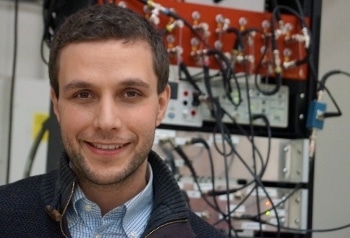Mar 11 2016
Over the past two decades, nanoscale devices and nanomaterials have been increasingly developed. Flat graphene crystals have many potential applications in advanced superconductors or electronics, and they could usher in a new era of affordable medical imaging.
 Andrea Young (Photo Credit: Sonia Fernande)
Andrea Young (Photo Credit: Sonia Fernande)
The Air Force Office of Scientific Research (AFOSR) Young Investigator Research Program has awarded a grant to UC Santa Barbara physicist, Andrea Young. This grant would allow Young to further advance the development and characterization of nanostructured materials.
I’m elated to have been chosen by the Air Force for this prestigious award. It’s really going to let us hit the ground running at UCSB.
Andrea Young, Physicist, UC Santa Barbara
Young believes that the test phase is a turning point, where most of the work dedicated to designing sophisticated devices and materials is centered. This is the stage where attempts are made to find out why certain things do not behave or work in spontaneous ways. According to him the solution could lie in the nanoscale, where material or device impurities and imperfections can affect its performance, and may even result in unexpected phenomenologies.
While traditional measurements of materials, like electrical resistance, could help to detect the basic physics, they do not help to determine their true structural cause.
Physics of materials is complicated; when you have strongly interacting electrons and disorder, it’s very hard to calculate what is going to happen from first principles. So the more experimental observables you can bring to bear on a material, the more likely you are to get the right answer for what’s going on.
Andrea Young, Physicist, UC Santa Barbara
To overcome these issues, Young and his team are developing a new device called nano-SQUID-on-tip (nSOT). The aim of the study is to take concurrent measurements of the topographic, magnetic, and thermal characteristics of materials.
It’s a microscope, but not the kind where you look through a lens.
Andrea Young, Physicist, UC Santa Barbara
The device is a sensor fixed at the tip of a small tube, honed to roughly 50 nm in diameter and brought proximal to the material’s surface.
The tip is sensitive to magnetic field and temperature, and if you shake it and measure how much it shakes you should be able to tell when you touch a surface, giving a view of the topography.
Andrea Young, Physicist, UC Santa Barbara
If these capabilities are integrated in a single probe, then the nSOT device could possibly be used to associate the magnetic and physical structure, or the spatial association between thermal dissipation and current flow, which creates a magnetic field. All of these aspects are important to ensure the performance of nano-sized devices.
Having a tool where you can image all these observables on the relevant length scales allows you to know quickly whether you made a material with the properties you were going for The real heart of this proposal is instrumentation development.
Andrea Young, Physicist, UC Santa Barbara
Young served as a visiting scientist at the Israel-based Weizmann Institute, where the nSOT device was initially fabricated.
I’m hoping we can take the technique to the next level so it can be used on irregular materials and under more extreme conditions of temperature and magnetic field.
Andrea Young, Physicist, UC Santa Barbara
Young believes that this fundamental research work could have a variety of applications in those fields where innovative materials and devices are constantly developed and used. This could also close the gap between device/material design and characterization.
We’re particularly interested in applying the nSOT to exotic types of low-dimension electronic states in graphene, where electrons can flow without dissipation in certain parts of the material and then only dissipate their energy at the boundary, but that is only one of many, many uses such a general tool will have.
Andrea Young, Physicist, UC Santa Barbara